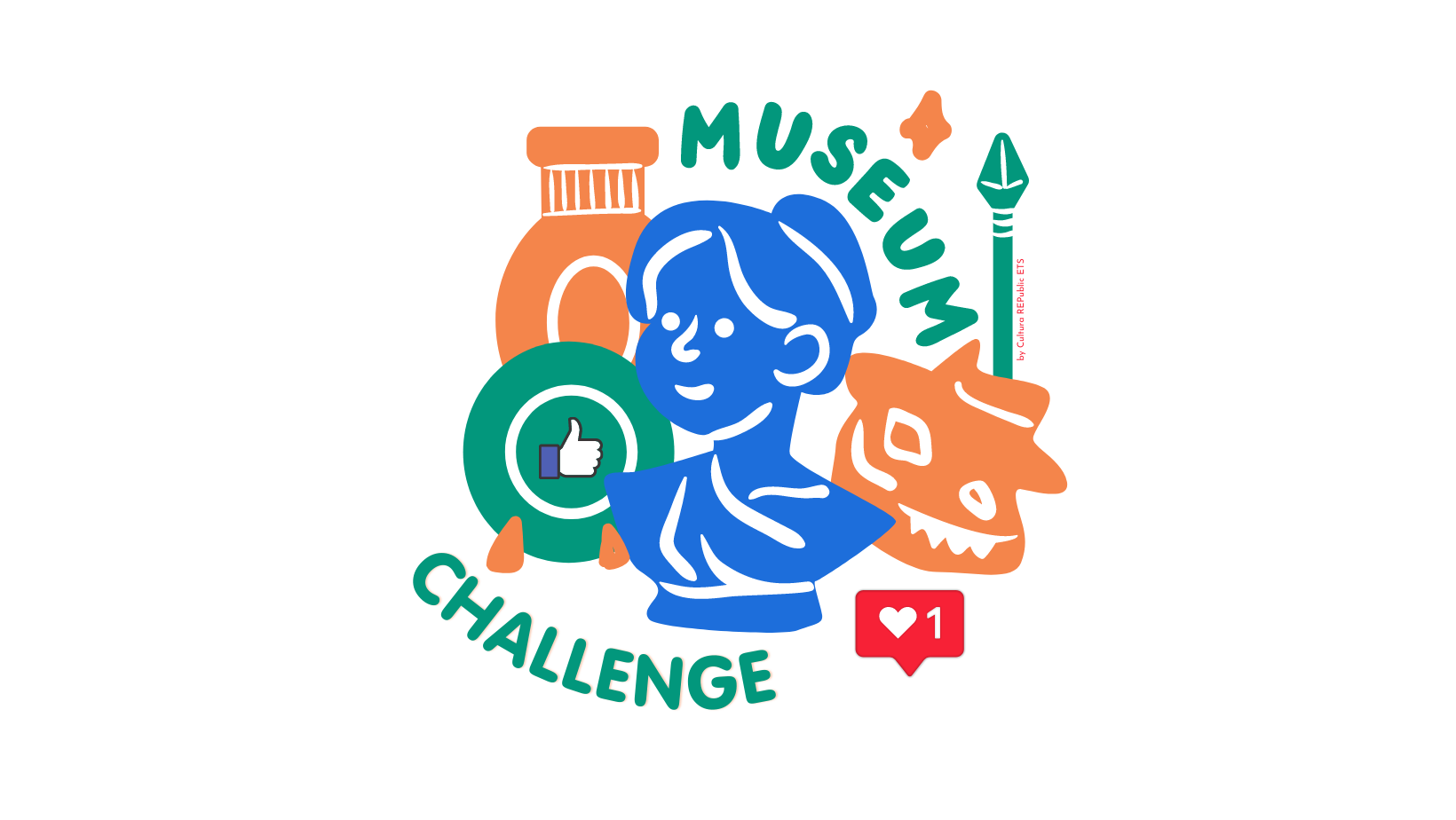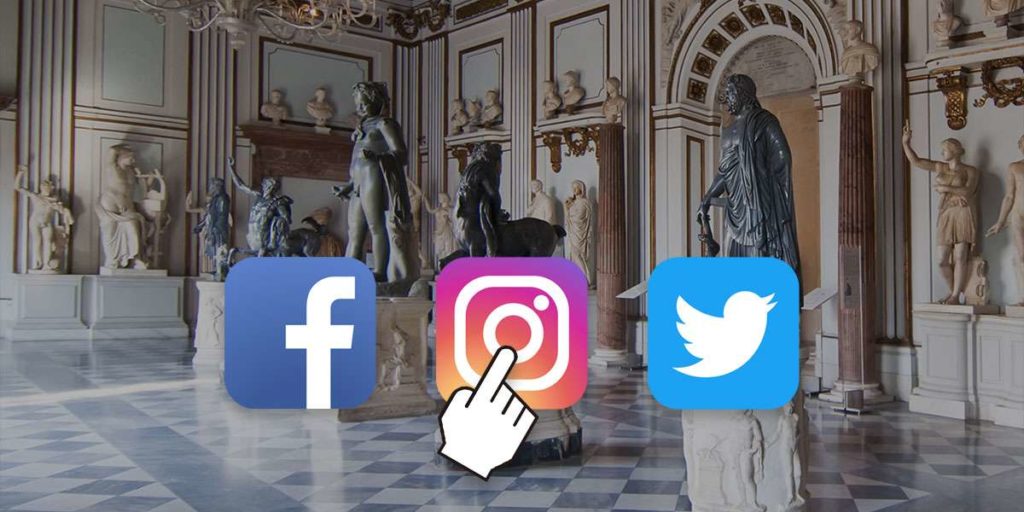Museums and social networks: 10 Italian inspirational museums + 1 bonus
21 October 2022

An analysis of the Digital Innovation in Cultural Heritage and Activities Observatory, carried out in 2016, showed that 52% of Italian museums have at least one account on social networks. Facebook is the most used (51%), followed by Twitter (31%) and Instagram (15%). The results cannot be defined as innovative, but we have to consider that in that year it was a growing trend. Now, infact, 95% of museums have a website and 83% have an official account on social networks, with a greater presence on Instagram.
But what has changed in six years?
For the past two years the pandemic, which has forced museums to close for a long period of time, has initiated a process of “webification”. Many museums were forced to catapult themselves into the ether, others already had a social presence but it was seen as a mere showcase and not as a space to produce content, or even as something strategic in promoting. Instead, other museums were familiar with social media and had been using them for some time, but the forced closure challenged them as well.
Let’s say that the importance of the web presence and the museum digital identity is now much clearer: it’s not just a showcase or a container, but it can produce a new meaning or catch non-physical audiences.
Here we have put together the museums that we think deserve some attention and from which take inspiration.
- The avant-gardist. In order to encourage approaching and getting young people to participate in precious collections scattered throughout the country, showing up on social media and following the latest trend, isn’t enough. Since opening its doors, Centro Pecci has engaged people form 0 to 99 years old through workshops, guided tours, thematic paths, but also programmes that ensure the museum is accessible to everyone. But it doesn’t stop there! On its Instagram and Facebook accounts, in addition to its support for art in all its forms (painting, sculpture, photography, music, filmmaking and literature), stands out one of the proposals to make Italian language more inclusive, namely the shwa (ǝ), to the delight of some people and the scepticism of others. Undoubtedly, this is a choice that gives much food for thought.
- The peopletelling. Pirelli Hangar Bicocca is more of an exhibition venue, but it also has famous permanent installations. Its Instagram profile tells every aspect of the foundation’s life, and the main protagonists are the people: artists at work, curators creating concepts, exhibit designers setting up, the public observing, investigating, participating… In short, everyone! In fact #ArtToThePeople is its official hashtag.
- The engager. An article in la Repubblica described it as «a museum that focuses on the audience». This is the MADRE – museum of contemporary art Donnaregina – that has always offered activities for the public to transform museum spaces into a place of interaction, both physical and virtual, in which to confront, express and share. Its Instagram account follows the same approach allowing visitors to share their museum experience through the hashtag #museomadre. But not only! To the delight of many, it’s one of those museums that always replies to tweets, questions and observations, thus making it a close friend.
- The timeless classic. It’s a classic story: if you visit the Italian capital for the first time or if you already know it, you will never cease to be amazed by the Colosseum. Its Archaeological Park houses some of the most important archaeological evidence of the history of Western civilisation and the birth of Rome, set in a breathtaking landscape. During the pandemic it has boosted its digital presence with the aim of expanding the museum experience: from the selections of masterpieces of the Ancient Rome in the website to permanent collections, from thematic paths and didactic activities to podcasts with meetings and book presentations. On its social profiles there is no lack of events and activities (digital and not), but not only. Its Instagram profile, among suggestive photos, creative reels and exceptional testimonials, offers to digital visitors the enchantment of the archeological areas, letting them immerse in a timeless atmosphere.
- The minimalist. Palazzo Grassifocuses on contemporary art and on its Instagram profile great importance has the very minimal, well-finished but clear graphic and visual aspect. The covers of the featured stories follow the museum’s logo, some videos, which look like ASMRs (acronymous of Autonomous Sensory Meridian Response) focus only on sounds and details enhancing them and making them almost abstracts.
- The meme creator. Archaeology takes us back to ancient times and traditions and often stimulates the imagination. However, some people find it boring. So how can a museum communicate it making it more attractive, without losing its value? The MAAM seems to have found a good compromise and its Instagram profile is the proof. In particular, its communication strategy couldn’t resist the charm of memes, which add a touch of lightness to the narration without failing the accuracy of information, and word games.
- The photographic. In 2021 it was selected by the New York Times as one of the five museums to follow on Instagram. We are talking about the Stibbert Museum. It’s considered as one of the most important weapons museums in Europe and has a rich collection of weapons, armours, porcelain, fans and unique artefacts, inside a splendid 19th century villa. The narrative through its social networks is not less impressive! Events, new exhibitions and openings are published on Facebook, while pictures of shining armours, ancient armoury, period costumes and villa’s interiors and exteriors, emerges on its Instagram profile. Different framings and angles, together with a uniformly distributed lighting, give depth to the spaces and focus on the subject, almost bringing it to life and tacking the “digital visitor” back to a timeless story.
- The playful. Once upon a time, or rather, there is still a museum that is not a museum (it doesn’t have permanent collections), inside a church that is not a church (it’s deconsecrated), inside a roundabout that isn’t round (Rotonda della Besana). Yet no place could be so extraordinary for the imaginative and creative gaze of a child who goes beyond appearances. We are talking about the MUBAof Milan whose protagonists are the children themselves. Its social communication strategy is in the choice of lively, bright colours, vivid illustrations and pictures of the little visitors.
- The scientific. Science enthusiasts can’t miss the Museo Galileoin Florence – Istituto e Museo di Storia della Scienza – which preserves mathematical, opticals, astronomical, surgical and navigational instruments produced until the 20th century. Starting with the collections of the Medici and Habsburg-Lorraine families, it is now a place of entertainment for young and old visitors, but also of information, documentation and communication at the service of historical-scientific research. Its social media narrative follows the same style. Its Instagram profile, for example, is classic, orderly but not at all banal: the covers of the featured stories follow the museum’s logo, while the posts, whether it’s photos or reels, are mostly informative and reveal scientific curiosities in a captivating way, avoiding specific language.
- The illusionist. Certainly the star of this category is not the charming Edward Norton but the Museum of Illusions in Milan, or Moi, which gives space to every possible deception of the mind testing young and old visitors. If it’s true that a picture is worth a thousand words, there is no more winning strategy to build the social identity of a place where visual effects reign supreme, than to focus on Instagram. In this platform the Moi shares its visitors’ experiences, events, information but mostly it enjoys engaging its digital audience with riddles and optical illusions.
But we promised you a bonus! We selected a funny foreign mention that has caught our attention.
The scandalous. For a few years, museums have been in constant conflict with the stringent rules of social media: they spread images of their masterpieces, but when it comes to nudes and “erotic” subjects, the platform’s automatic algorithms are unable to distinguish a work of art from a non-artistic nude image. It follows that the censorship proceeds with the removal of the post or blocking the account. Vienna’s museums have rebelled against these frustrating restrictions by opening a profile on Onlyfans, a platform that, although known for amateur porn contents, now hosts hundreds of works that are “victims of this new wave of modesty”, as stated by the Vienna Tourism Board. This is the case of the Albertina Museum which, after finding its TikTok profile suspended and then blocked for spreading a photo showing an obscured breast, was the first to show up on this platform with the aim of stimulating reflection on the power of censorship and the (perhaps provocative?) effect that art continues to have.
We could say that museums are overcoming the stereotype of the closed and boring place unable to open up to modernity. Yet it is not always easy to find the right communication strategy with personality. This is why we at Cultura REPublic have designed the Museum Challenge project, a path to collect good practices in museum social communication and build a digital relationship with the audience.
See the project
Donazioni
Come tutte le associazioni, ci finanziamo grazie a chi crede in noi, nella nostra professionalità e affidabilità.
Accettiamo libere erogazioni